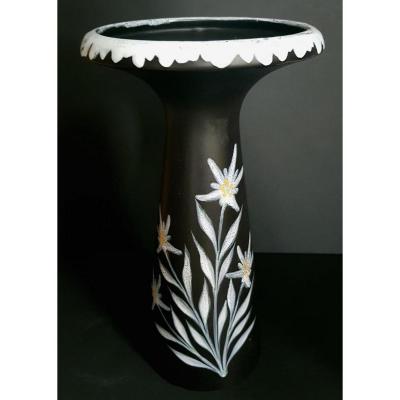Pierre de Belay (1890-1947) born in Quimper, he is one of the most talented artists of his generation. Close to Max Jacob, witness to the effervescence that agitates the world of art in Montmartre then Montparnasse, de Belay goes through the great movements of modernity by favoring a realistic approach that imposes a style recognizable among all. Broadly assimilating the achievements of expressionism, fauvism and even cubism, he multiplies the subjects that revisit the great themes of Breton painting as much as he strives to invest the underworld of the cafés of Montparnasse or the legal news that shakes French society between the two wars. His art, far from remaining static, reinvents itself according to his encounters or his interests. Thus, the regular practice of engraving led him at the end of the 1930s to invent a pictorial style without equivalent: the trellis. The prolific art of Pierre de Belay first flourished in the field of easel painting, but also enjoyed great success in the field of large-scale decoration, notably the famous ensemble intended for the dining room of the Ker-Moor hotel in Bénodet (1923). Attracted by the decorative arts, he also multiplied studies for tapestry projects, book illustrations or costume projects (notably for the Swedish Ballets). A complete artist, Pierre de Belay is above all the champion of color. Thick, delicate, flat or striped, the touch radiates pure pigments that enchant each of his compositions. Contrary to a whole generation of artists (Vlaminck, Derain, La Patellière, Dunoyer de Segonzac, etc.) who plunged into the vertigo of a dark and tormented painting, he claimed the readability of his compositions, adopting for this a palette of bright and shimmering colors.


































 Le Magazine de PROANTIC
Le Magazine de PROANTIC TRÉSORS Magazine
TRÉSORS Magazine Rivista Artiquariato
Rivista Artiquariato